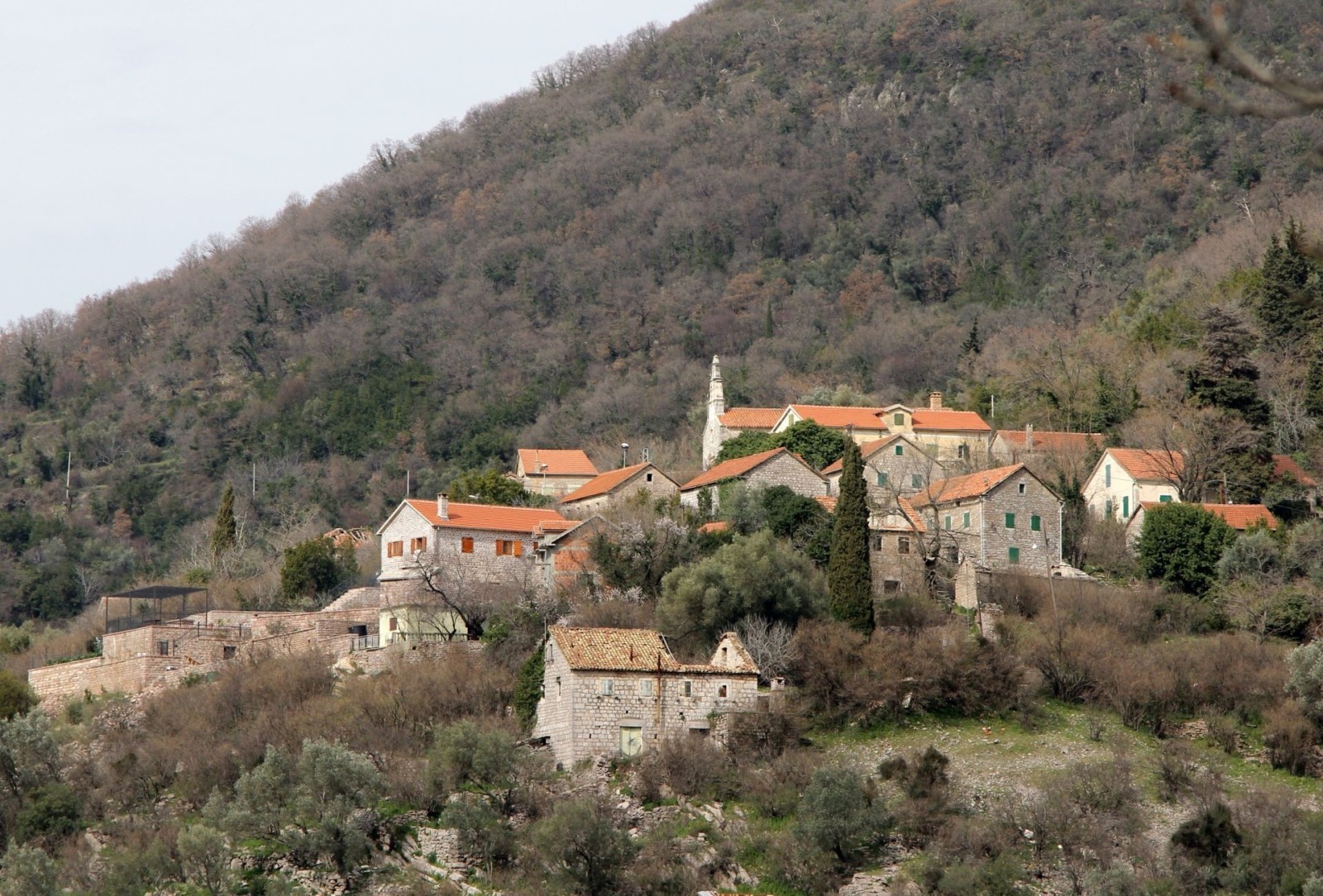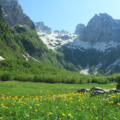The stunning hills above Tivat hide one of Montenegro’s most beautiful natural landscapes, Gornja Lastva. This quaint village has not only managed to preserve its authentic rural charm but has also evolved into a favorite getaway location. It is offering a space away from the hectic pace of city life. With narrow and rustic roads lined with stones and extremely archaic architecture, Gornja Lastva serves as a living reminder of traditional Montenegrin culture.
Besides being one of the most stunning areas in the countryside, this village is a special place for Montenegro’s cultural landscape. The ancient stone houses are a testament to a rich history stretching back centuries. From there, you can enjoy mesmerizing panoramic views of the Adriatic Sea. It serves as a constant reminder of the village’s unique geographical setting.
Therefore, if you are a nature lover or historical nerd exploring Montenegro, keep reading and discover what Gornja Lastva offers.
The Allure of the Location
One thing that makes Gornja Lastva stand out is the allure of its location, which has been preserved for centuries. Once you step into this hillside and breathe its air, you will travel back in time. The atmosphere will make you feel like you are enjoying a day with a typical Montenegrin family, overlooking the Bay of Kotor. With this feeling, you truly grasp the core of laid-back Montenegrin life.
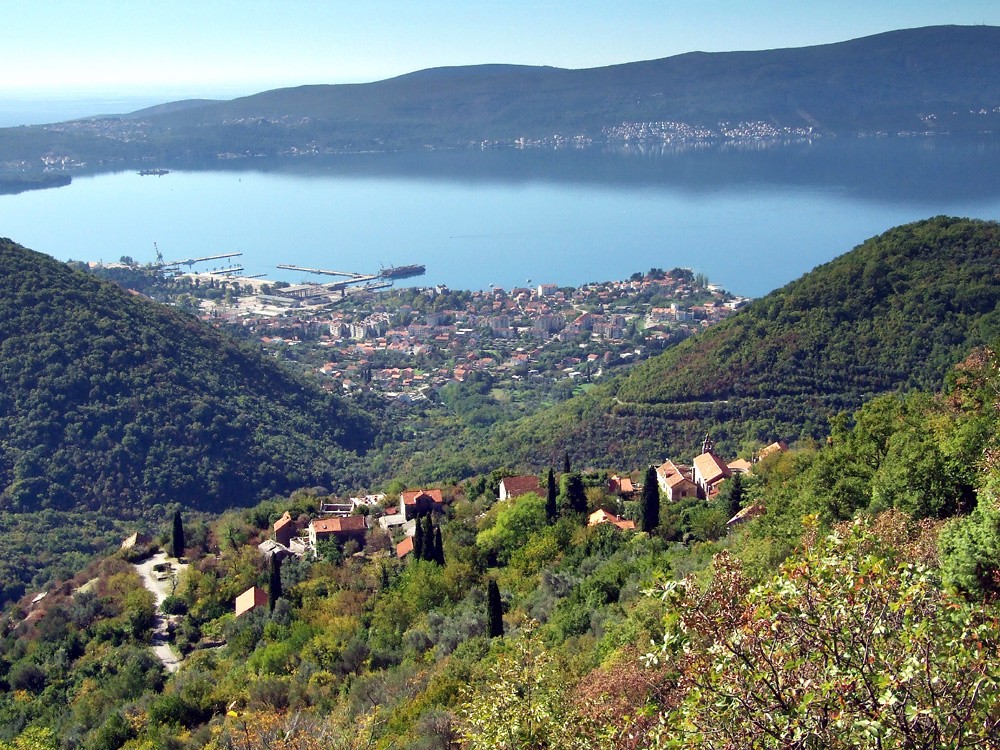
Unfortunately, nowadays, Gornja Lastva is barely inhabited, especially in winter. During warmer parts of the year, locals spend time there, open stores and villas, and maintain the “Dom Kulture” cultural hub and St. Maria’s church. With the summer liveliness, the true charm of Gornja Lastva also comes to life.
Despite this, many visitors choose to spend the weekend in this serene spot. Because of this, you can find several great accommodation options, including Villa Look and Old Stone House Villa. These are perfect for a day in the countryside enjoying stunning Adriatic views from a terrace.
Architectural Marvels
Stone Houses
The Gornja Lastva is renowned for its authentic architectural marvels, presenting the true atmosphere of Montenegrin villages. The most striking example of this is traditional stone houses, among which some managed to maintain their original looks dating back to the 19th century. These objects give a glimpse into Montenegro’s rich history and add to the village’s rustic atmosphere.
Church of Saint Maria
Another important monument in the area is the local church of Saint Maria. This gem is a testament to the village’s religious heritage and architectural mastery. The foundation of the church was set in the 16th century and its indoor area even today features original Orthodox frescoes from that period, combined beautifully with altar woodwork.
What captures the attention of this religious object is the exquisite painting of the Nativity of the Virgin displayed on its premises. Attributed to the esteemed Venetian painter Andrea Trevisan, this artwork enriches the site with both historical depth and artistic gravitas.
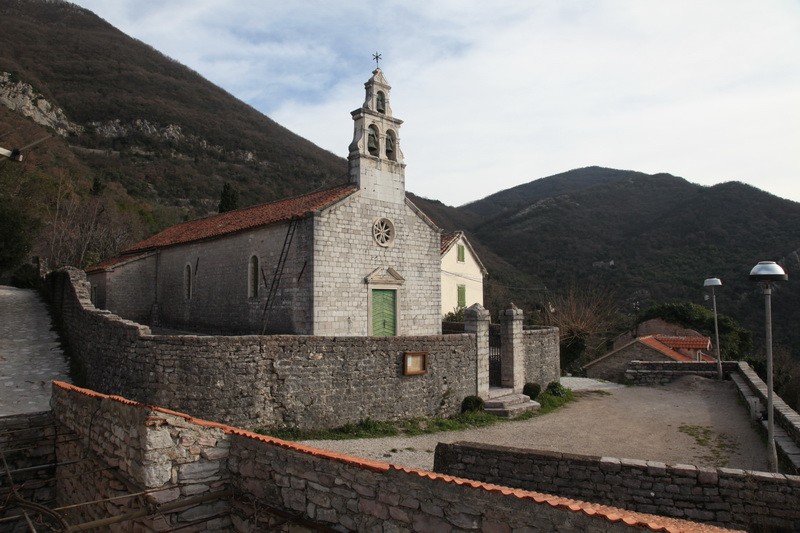
The Legend
The church altar has the statue of Saint Joseph, the village’s patron, which a man by the name of Joseph brought from Italy. The village’s most famous legend is tied to the statue and states two commandments to celebrate the protector.
The first commandment on the day dedicated to the saint, villagers should carry the statue in a procession around the church. The second one states that every newborn male in the village receives the saint’s name as a tribute. The custom only breaks when no more men in the village bear this sacred name, but locals continue to honor it passionately.
This legend become a part of the tradition that persists to this day, with the procession still taking place and new generations continually being named after the saint.
The Olive Mill
Not far from the church is located another authentic attraction, famous among visitors of Gornja Lastva – an olive mill. In that old house, which once served as the gathering spot where locals would come and mince their olives, now you can still see the original mill from the 19th century. It tells a story of local tradition and how Bokelje, the local settlers, used to produce olive oil.
While the mill remains fully functional even to this day, it is not used for its original purpose, and it represents a simple display piece in the improvised museum in the village.
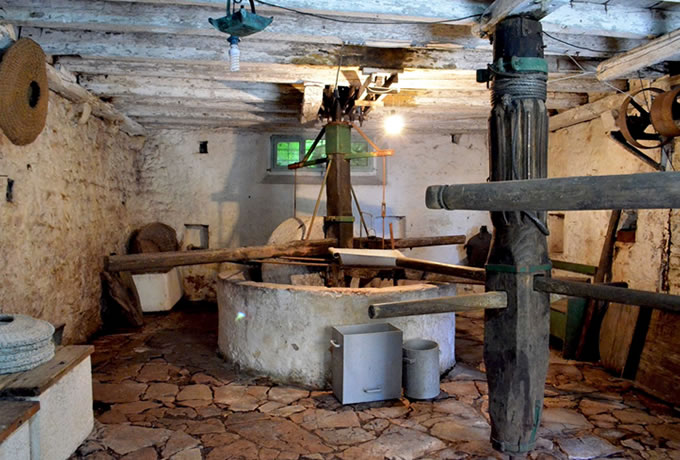
Things to do
The welcoming atmosphere of the village is shared with many tourists. They especially love to see how locals together in the main square and tell stories of past times. In this communal space, which often serves as the gathering spot for events and celebrations. Here you can see everything from traditional dance performances to artisanal markets.
Besides the village square, an old house of culture – Dom Kulture also serves as a spot where the villagers have a good time. People enjoy drinking wine and local brandy, listening to music, and singing by the fireplace.
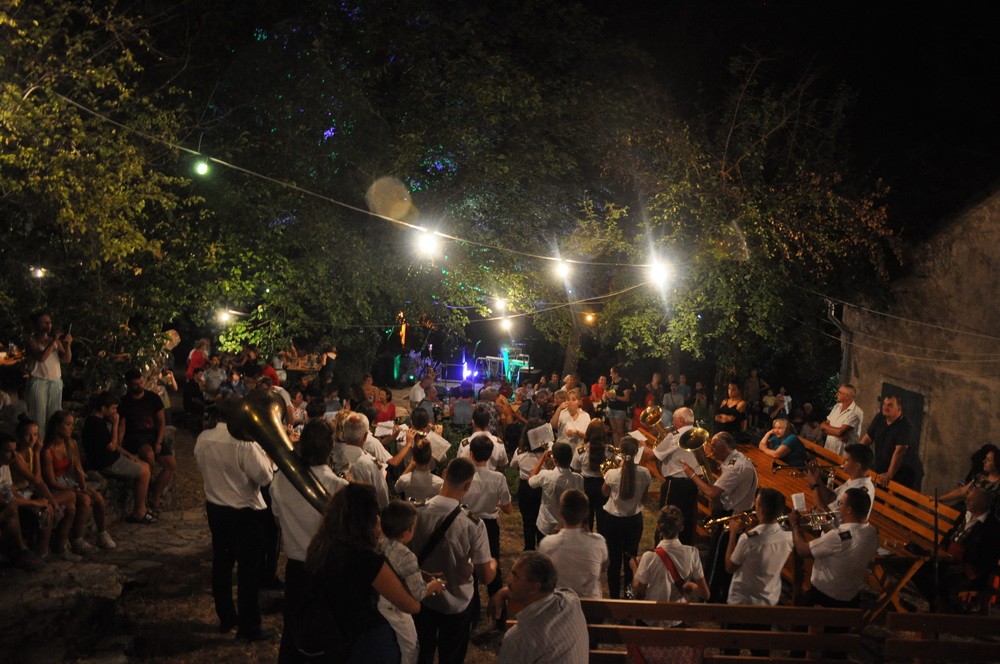
Gornja Lastva hosts the Lastovo summer festivals, where you can see the region’s music, dance, and folk costumes. The village is also famous for its annual Olive Festival, a celebration that showcases the village’s rich agricultural heritage. The event features olive oil tastings, traditional music, and local crafts, making it a highlight of the cultural calendar.
Often locals throughout warmer parts of the year offer personalized service to visitors. That can include a guided tour of the village’s historic sites, making your stay even more memorable. People choose Gornja Lastva as a great spot to take a break on their hiking journey to reach the Lovćen mountains.
Ultimately, what really brings life to the Gornja Lastva is the successful community-led conservation efforts. As visible during summer locals come back to keep the spirits of this incredible place alive. However, it is possible to visit this village even during winter despite this being off-season time. An old villager comes from Tivat and opens the doors of the church, the mill, and the center of culture to his guests. This kind of initiative has helped preserve the natural and cultural heritage of Gornja Lastva, making it a model for sustainable tourism.
Conclusion
Gornja Lastva, a Montenegrin jewel that combines natural beauty with a rich cultural past. This slow-paced town on hills above Tivat is a haven away from the bustle of the city since it has managed to keep its original character intact.
Views of the Adriatic Sea are especially stunning against the backdrop of the town’s centuries-old stone buildings and cobblestone alleys. The village’s hilltop setting provides easy access to a variety of outdoor activities that best represent Montenegrin culture.
Besides available modern accommodations, architectural marvels like the Church of Saint Maria (built in the 16th century) and the Olive Mill (built in the 19th century) speak length on the historical context of the village together with numerous festivities.
In this way, the true spirit of Gornja Lastva is preserved and it provides a memorable journey that sums up Montenegro for history buffs, nature lovers, and those just looking to relax.

